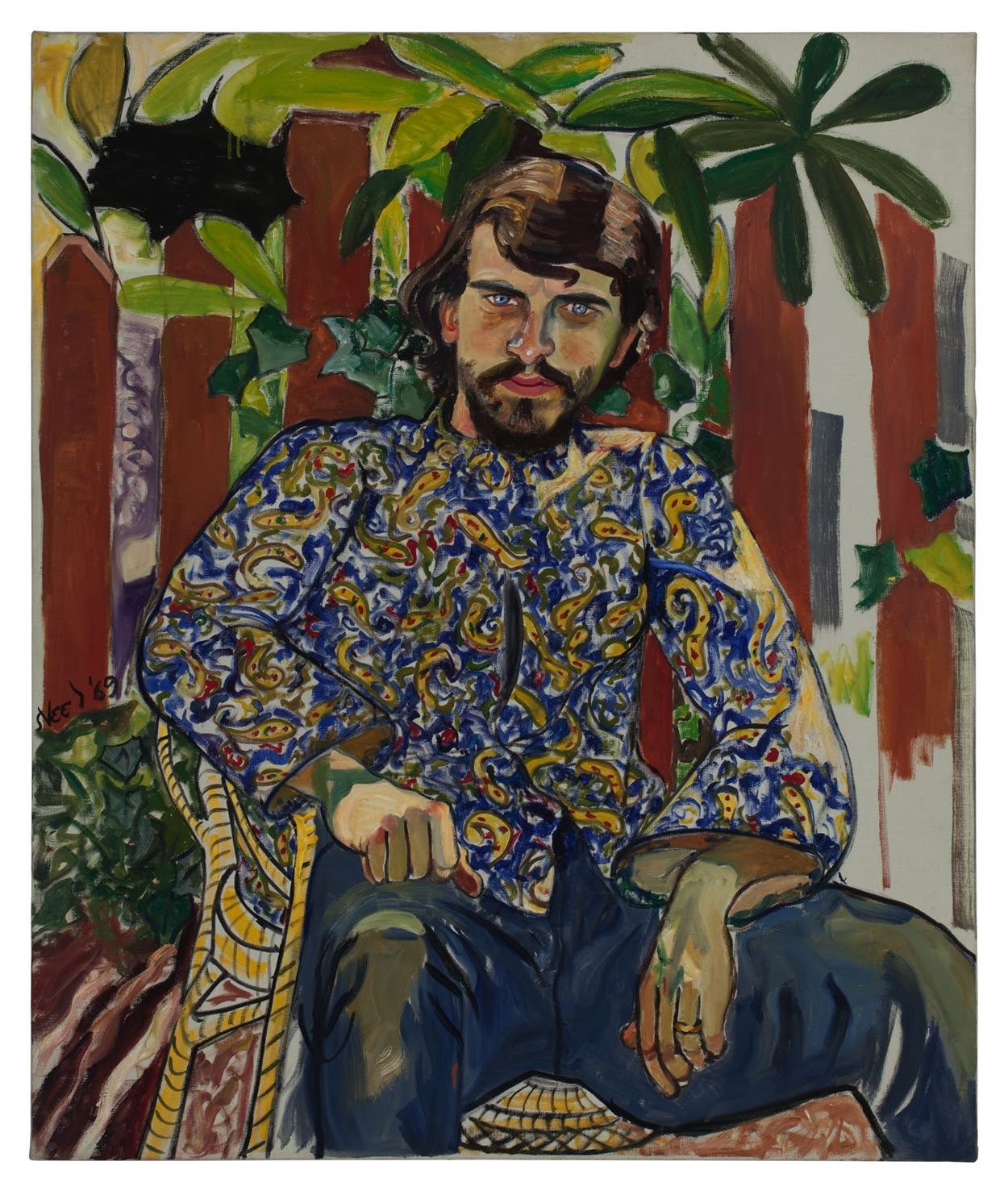Alice Neel

Neel painted her portraits from life, engaging her sitters in long conversations as she worked. She had little time for backgrounds, describing the surrounding scene in only a few loose brushmarks. What most preoccupied her was capturing the sense of a person rather than their semblance. She did not consider herself a realist (nor did she call herself an expressionist). Instead, she was visionary, pushing portraiture to its more radical, human potential. According to art critic Deborah Solomon, her momentary connection with her sitters “was so intense she claimed to feel newly desolate every time she completed a portrait.” Algis Alkaitis is a portrait of a friend of the artist’s son, Hartley. Though Neel did not know Alkaitis well, her painting evokes an understanding that extends beyond mere likeness.
b.1900, Merion Square; d.1984, New York
Alice Neel found fame late in life. It was only in the late 1960s, buoyed by the counterculture of the time, that she began making a living as an artist. Her figurative paintings – insensible to modernist fashions – had until then been dismissed as naïve and sentimental. Yet it was this commitment to figuration that established Neel as a foremost American painter. She became an incidental chronicler of New York, the city where she lived and painted for six decades. “What a treasure of goodness / And life shambles,” she wrote in a poem to Spanish Harlem, “Your poverty and your loves.” All these things, this goodness and its shambles, found expression on Neel’s canvas. While she painted landscapes and still lives, it is her portraits for which she is remembered, with their stark intimacy and feeling, picturing the wretched and well-off, the famous and forgotten, friends and strangers. Over the many years, her work became a history of the city’s cultural ascendancy, with all its eccentricities and curiosities, its vulnerabilities and vanities. This was New York before Aids, before 9/11, before the subways were safe – a city of beatniks and broken glass.